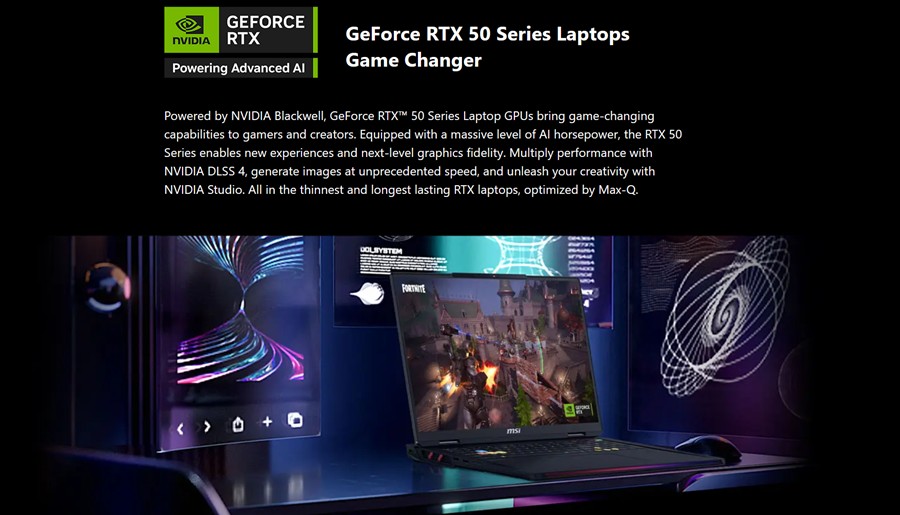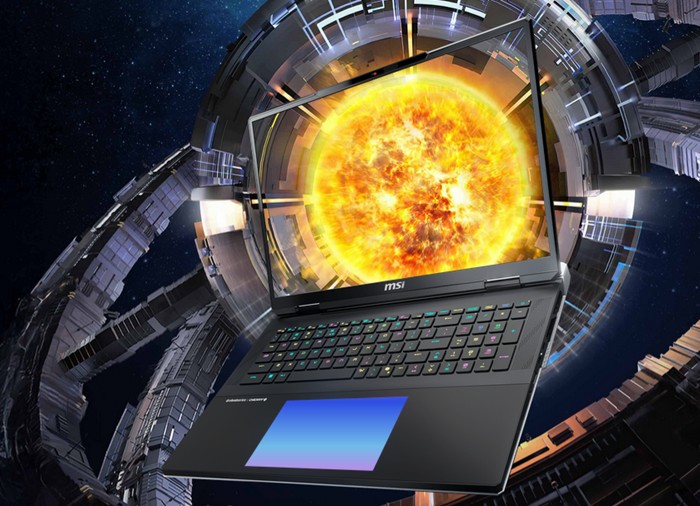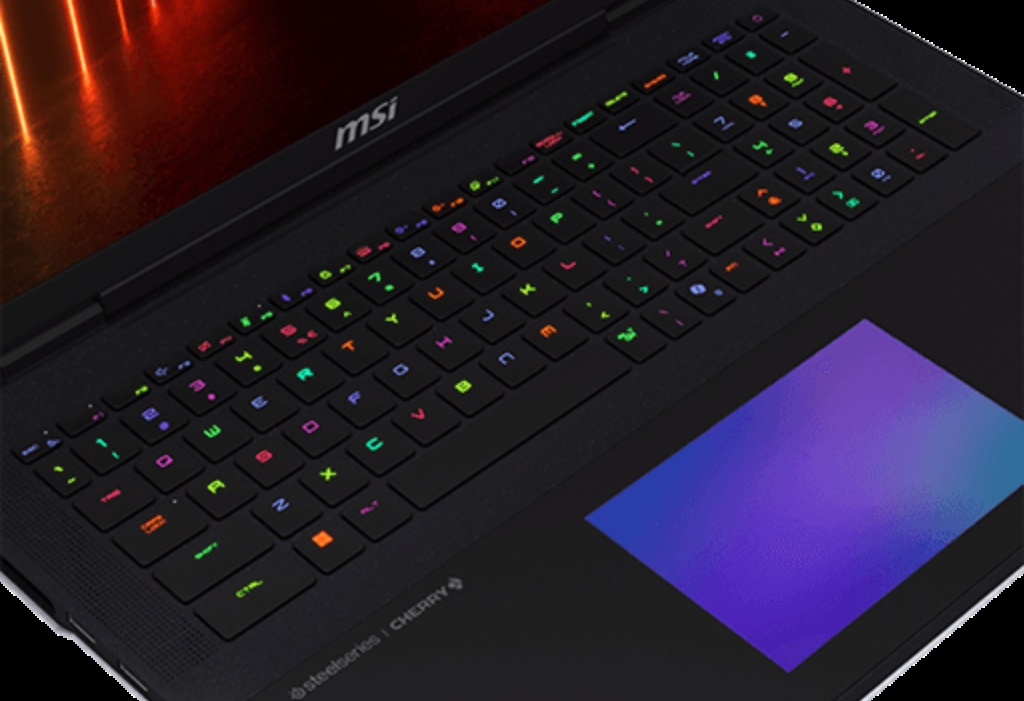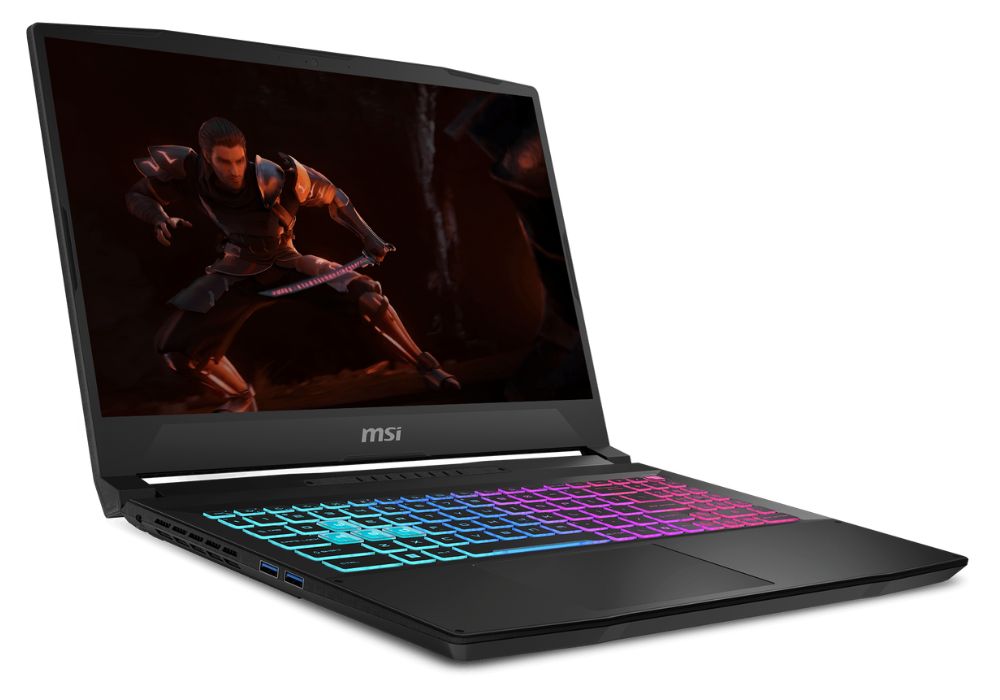MSI has been on a roll recently, launching gaming laptops with best-in-class performance powered by NVIDIA’s latest graphics cards. The brand has launched a new series of MSI laptops across the Titan, Raider, Vector, Crosshair, and Katana lineups. They are powered by NVIDIA GeForce RTX 50 series laptop GPUs and leverage technologies like DLSS upscaling and frame generation to help deliver best-in-class gaming performance.
NVIDIA GeForce RTX 50 series consists of a host of new GPUs from the NVIDIA GeForce RTX 5090 to the GeForce RTX 5060, offering a wide range of laptops that suit various needs. From gaming to content creation or running AI workloads, there’s a laptop for every use case.
AI Meets Performance in MSI GeForce RTX 50 Series
MSI gaming laptops across the Titan, Raider, Vector, Crosshair, Katana, and Cyborg series feature the latest NVIDIA GeForce RTX 50 series GPUs with AI smarts such as DLSS. The latest DLSS 4 technology, combined with multi-frame generation, ensures smoother gameplay. DLSS or Deep Learning Super Sample uses AI to reconstruct frames and upscale them with no loss in quality to deliver a best-in-class gaming experience.

Combined with features such as Ray tracing, AI-enhanced rendering, and studio drivers, it ensures both gamers and creators can leverage these GeForce RTX 50 series-powered laptops to their maximum potential. The GeForce RTX 50 series GPUs on MSI laptops bring up to 24 GB of VRAM, offering the best visual experience when playing games. It’s more than sufficient for 3D rendering and model training, which are both popular modern fields.
The MSI Titan and Raider feature Intel Core Ultra 9 285HX, while the Vector and Crosshair bring Core Ultra 7 255HX processors, alongside AMD options. The Katana and Cyborg series are powered by 14th Gen Core i9 and Ryzen 9 8940HX processors. Titan and Raider series are powered by GeForce RTX 5090 and RTX 5080 laptop GPUs, whereas the Crosshair and Vector series get NVIDIA GeForce RTX 5070, RTX 5070 Ti, and RTX 5060 laptop GPUs. The same goes for the Katana and Cyborg series, albeit with a lower power draw to cater to different kinds of users.
The top-of-the-line Intel Core Ultra 9 and Ultra 7 feature up to 24 cores and threads, with 8 performance cores and 16 efficiency cores. They boast a top clock speed of up to 5.5 GHz and deliver great NPUs to boost the overall AI performance. The 14th Gen Intel Core i9 processor in the Katana and Cyborg series also brings the same performance but without some AI smarts.
MSI Overboost Ultra: Beyond RAW Performance
These MSI laptops come with an Overboost Ultra feature, which smartly adjusts the power distribution between the CPU and GPU. The Titan 18 HX AI and Raider 18 HX AI can draw 270W and 260W, respectively, with both CPU and GPU combined. The Vector and Crosshair series achieve up to 170W of peak power draw, whereas the Cyborg and Katana max out at 115W. Overboost Ultra adjusts the power draw between the CPU and GPU. This ensures that you get the maximum peak sustained performance without throttling the laptop.

The maximum total power draw is the sum of CPU and GPU power draws. In the GeForce RTX 5090-powered Titan 18 HX AI’s case, this is 95W for the Intel Core Ultra 9 285HX and up to 175W for the GPU with Dynamic Boost 2.0. Due to this, Titan 18 HX AI and Raider 18 HX AI refuse to sweat at maximum graphics settings and 2K resolution with DLSS 4. The GeForce RTX 5070/ RTX 5070 Ti laptop GPUs on the Vector and Crosshair series can pull up to 205W, whereas the Cyborg and Katana can reach up to 170W.
To keep the temperature in check, MSI has opted for Vapor Chamber cooling, with an extra pipe for the PCIe Gen5 NVMe so that the laptop always stays cool. The superior cooling system is effective at lowering the temperatures and ensuring the laptops never thermal throttle. It also ensures the keyboard and palm areas stay cool for those extended gaming sessions.
Games like Alan Wake 2 run at 201 FPS, whereas Cyberpunk 2077 runs at an average of 258 FPS. Black Myth: Wukong gets a solid 92 FPS with frame generation at Ultra graphics. Similarly, the flagship Titan and Raider gaming laptops fly during regular day-to-day tasks with a PCIe Gen5 SSD and 6400 MHz DDR5 RAM, offering double the read-write speeds compared to the last generation.
The Vector and Crosshair also equip a PCIe Gen5 SSD slot alongside the 5600 MHz DDR5 RAM. Meanwhile, the Katana and Cyborg come with PCIe 4.0 slots and DDR5 RAM.
Features That Add to the Experience
The GeForce RTX 50 series MSI laptops also feature Mystic Light. It can be used to customize the RGB lighting effects on the Raider and Titan series. The added customization could help you get immersed in the gaming experience and make the device look aesthetically pleasing.
The RGB extends to the keyboard as well. The Titan series features a low-profile Cherry Mechanical keyboard with per-key RGB customization. The Raider series has customizable RGB as well, albeit without the Mechanical keys. Although it does get a SteelSeries-branded keyboard. The lights and effects are fully customizable using MSI’s built-in software.

MSI’s Vector and Crosshair series also get a 24-zone RGB gaming keyboard. The Katana and Cyborg, on the other hand, get a respectable 4-Zone RGB gaming keyboard. All the Core Ultra series laptops also get a dedicated Copilot Key to quickly bring up Copilot.
Other highlights include 3D cooling feet that make the laptop sit at an angle, ensuring good airflow. Besides the Raider series, Titan also features a comprehensive speaker setup with 4x speakers and 2x subwoofers. The rest of the laptops in the series come with 2 x 2W speakers. The speakers on the Raider, Titan, Crosshair, and Vector are Hi-Res certified.

The Titan and Raider series feature 4K mini LED displays with up to 120Hz refresh rate for crisp visuals and an even immersive gaming experience. The displays on the Vector and Crosshair series max out at 2K at 240Hz refresh rate. The top Katana variant also gets a 2K IPS panel with 165Hz refresh rate, whereas the Cyborg gets a 1080p 144Hz IPS panel.
A great gaming experience also depends on the number of peripherals you can connect. Connectivity-wise, the Titan, Raider, Vector, and Crosshair boast Thunderbolt 5 support and all the possible ports you could ask for. The rest of the ports include an HDMI 2.1 port, USB 3.2 Gen 2 Type-C ports, and USB 3.2 Gen 2 Type-A ports on all Vector, Crosshair, Katana, and Cyborg laptops. Besides, you also get a full-size SD card reader and Ethernet ports for lag-free gaming.
Hardware That Screams Performance
MSI’s GeForce RTX 50 series laptops feature PCIe Gen5 SSD slots for faster storage. It also retains a generous number of PCIe Gen 4 slots. The Titan and Raider series bring three NVMe slots in total, so you never run out of usable storage. Besides, they also bring user-swappable DDR5 6400MHz RAM. The RAM on Titan, Raider, Vector, Crosshair, Cyborg, and Katana is expandable up to 96 GB.

Powering the Titan and Raider series is a 4-cell 99Wh battery, which comes bundled with a 400W charger. The Vector and Crosshair series offers a slightly smaller 4-cell 90Wh battery. Whereas, the Katana gets a 75Wh 4-cell battery, followed by 55.2Wh on the Cyborg.
MSI’s portfolio has NVIDIA GeForce RTX 50 series-powered gaming laptops for every type of user. The Titan and Raider series should serve dedicated gamers well. The Vector and Crosshair series, on the other hand, provide great specifications at a slightly lower price. Meanwhile, the Katana and Cyborg series offer a bit of everything and are great all-around laptops for both work and play.






